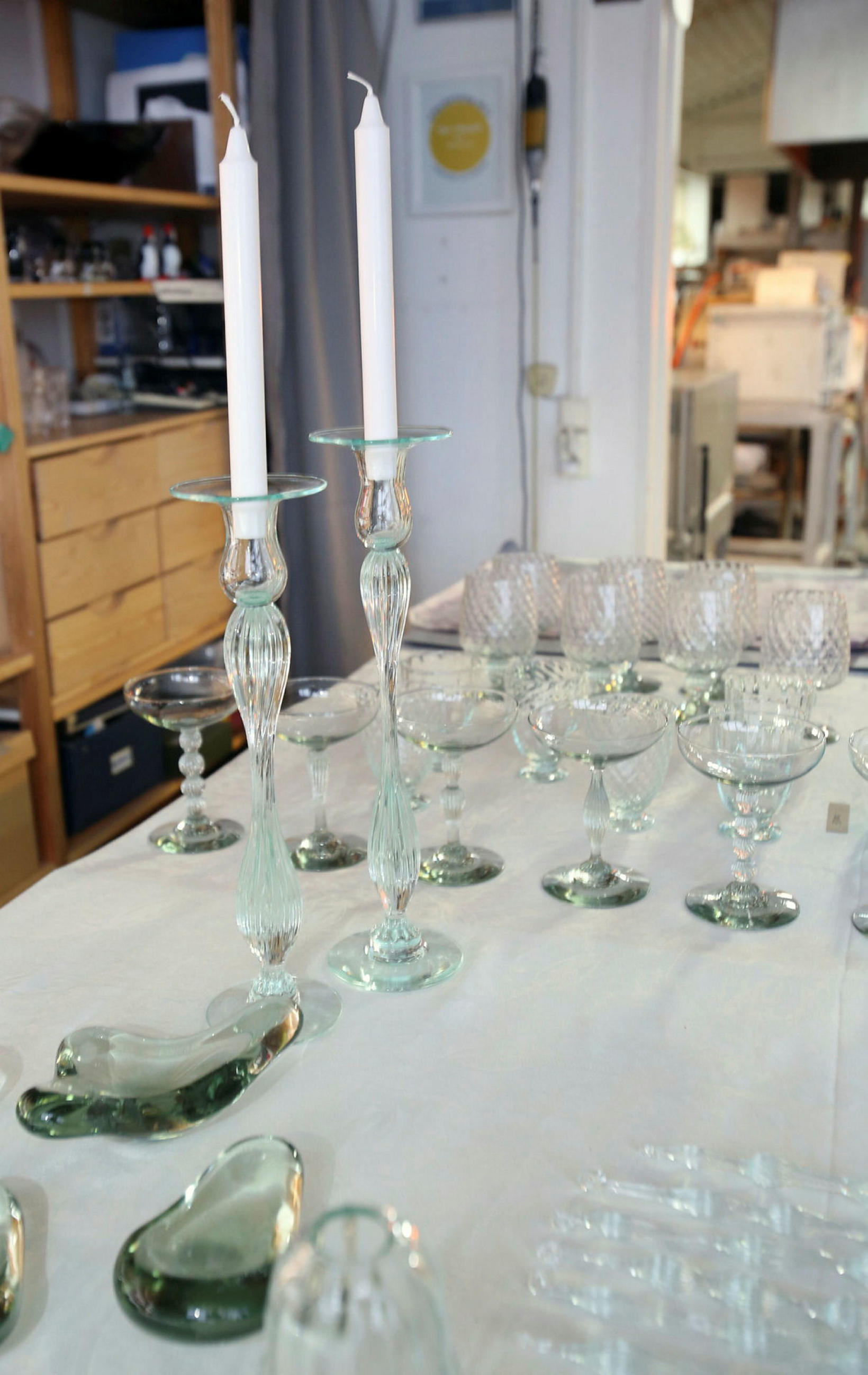The Christmas cat is made of recycled glass
In the Grundarhverfi district of Kjalarnes, you can find the Danish glassblower Anders Vange, who was given a place to create art at Sigrún Einarsdóttir's workshop. On tables and shelves, you can see a myriad of hand-blown glasses, candlesticks, vases, and other treasures that Vange has designed and made himself. He is lightly dressed, wearing shorts and a T-shirt, which is a bit unusual now that winter has set in. But the reason for that becomes clear as soon as he invites the journalist to watch the glassblowing. The heat from the furnace is substantial!
Vange is quick to show how he takes an old broken glass and makes a kind of Christmas-like icicle candle from it that can be hung in a window for Christmas. Anders designed this year's Christmas cat for Rammagerðin , which for several years has had artists create a new version of the Christmas cat, which is then sold in thirty copies.
Second generation glassblower
Vange moved from Denmark two and a half years ago with an Icelandic wife and two children.
"I met my wife when she worked in a gallery one summer that was directly opposite the family's glass workshop. We lived together in Denmark for ten years but often talked about moving here and I really wanted to," says Vange, who is from a small fishing village in the countryside of Denmark and was raised blowing glass.
"I am a second-generation glassblower and started in the profession very young. My parents had a glass art company where my father was a glassblower and my mother ran the business. I was about fourteen, fifteen years old when I started blowing glass and at seventeen I went to study glassblowing in Birmingham, England,” he says, adding that he loves his job.
“It takes a long time to acquire skills in the profession,” Vange says, who now sells his products at Rammagerðin, at Bjarni Sigurðsson’s Gallery on Skólavörðustígur and on the website reykjavikglass.com .
An organic and liquid form
Each piece is unique, as there is no mass production here.
“I try to make the pieces so that you can see that they were in liquid form at one point and my forms are very organic,” he says.
“Often when I’m designing new pieces it takes me ten to twenty hours to get the piece the way I want it. After I’m satisfied with the design it only takes me half an hour. When I was designing the Christmas cat, I did about fifty tests before I was happy with the result,” he says.
“I was chosen this year by Rammagerðin for the work and since it is only sold in thirty copies, it is a collector's item,” Vange says, who himself has two cats, both flesh and blood. So he didn't have to look far for inspiration for his artwork.
“My girlfriend is a veterinarian, so I hear a lot of stories about cats,” he says.
“I only knew the story of the Icelandic Christmas cat, but it is not found in Denmark and neither is Grýla,” Vange says with a smile.











